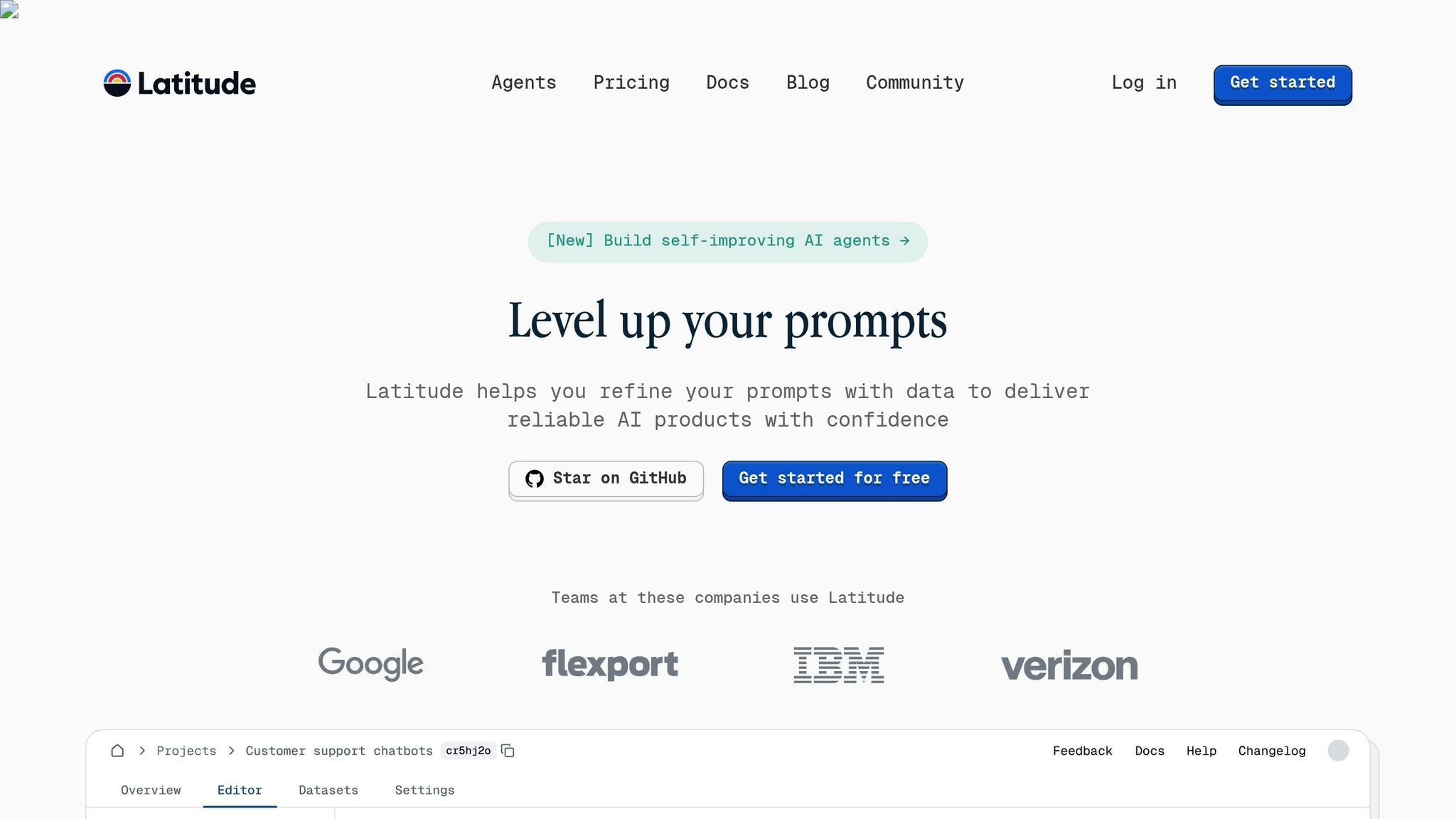How to Assess LLMs for Healthcare Applications
Learn how to effectively assess Large Language Models for healthcare applications, focusing on safety, accuracy, and compliance.

Integrating AI into healthcare is complex but critical. To ensure patient safety and effective outcomes, healthcare-focused Large Language Models (LLMs) require thorough evaluation. Here’s how you can assess them effectively:
- Focus Areas: Clinical accuracy, safety protocols, data privacy, and reliability are non-negotiable.
- Evaluation Phases:
- Define core requirements like safety standards and ethical guidelines.
- Select benchmarks tailored to medical scenarios.
- Develop robust testing methods, including rare and emergency cases.
- Analyze results to identify gaps and refine the model.
- Ongoing Monitoring: Continuously track performance, update models, and involve medical experts for validation.
Key takeaway: Prioritize safety, accuracy, and compliance to align LLMs with healthcare standards. Use tools like Latitude to streamline collaboration between medical professionals and engineers.
Core Evaluation Requirements
Evaluating LLMs for healthcare applications demands a thorough review across key areas to ensure patient safety and effective outcomes. Below are the essential aspects any evaluation framework must address.
Safety Standards
Safety is the top priority when using LLMs in healthcare. Key safety measures include:
- Delivering consistent and stable responses for similar clinical queries.
- Implementing clinical safeguards to prevent harmful or inappropriate advice.
- Developing a structured risk assessment process to identify and mitigate potentially dangerous outputs.
These measures create a foundation for providing accurate and ethical healthcare recommendations.
Medical Accuracy
Accuracy in medical contexts is critical for generating trustworthy, evidence-based recommendations. Evaluations should focus on:
- Comparing outputs with peer-reviewed research and clinical guidelines.
- Assessing diagnostic accuracy to ensure correct interpretation of symptoms and conditions.
- Verifying that treatment recommendations align with established protocols and best practices.
Frequent updates are necessary to keep models aligned with the latest research and standards.
Privacy and Ethics
Adhering to privacy laws and ethical principles is a core requirement for healthcare LLMs. Key factors include:
- Maintaining HIPAA compliance through rigorous data handling, such as de-identifying patient information, ensuring secure data transmission, and enforcing strict access controls.
- Following an ethical framework that respects patient autonomy, reduces harm, and promotes fairness and transparency.
The Latitude platform simplifies compliance by offering built-in tools and prompt templates, making it easier to integrate these requirements into your evaluation process.
Benchmark Selection
Choosing the right benchmarks is key to effectively evaluating LLMs for healthcare purposes. Proper benchmarks provide a thorough assessment of medical knowledge, clinical reasoning, and practical application skills.
Medical Benchmarks
Medical benchmarks should reflect a variety of healthcare scenarios. Key aspects to evaluate include:
- Clinical Knowledge: Test the model's grasp of medical terminology, conditions, and treatment protocols using questions similar to those in standardized medical licensing exams.
- Diagnostic Reasoning: Assess how well the model analyzes patient symptoms and medical histories to suggest potential diagnoses.
- Treatment Planning: Measure the ability to recommend treatment plans, including medication dosages and awareness of contraindications.
Latitude provides pre-designed benchmark templates to simplify healthcare evaluations while maintaining strict standards. Once domain-specific knowledge is assessed, the next step is to evaluate task performance.
Task Performance Metrics
Metrics for task performance should align with the specific healthcare tasks the model is expected to handle. Areas to assess include:
- Accuracy: Evaluate the precision of diagnostic decisions and the suitability of treatment recommendations.
- Safety: Measure the ability to avoid critical errors and properly evaluate risks.
- Consistency: Ensure the model provides stable responses across similar scenarios.
- Latency: Confirm the ability to deliver timely responses, especially for urgent cases.
Organizations should set specific benchmarks for these metrics based on their clinical needs and operational environments.
Benchmark Analysis
Once performance metrics are collected, analyze the data to identify areas for improvement:
- Comparative Analysis: Examine performance across different medical specialties and tasks to highlight strengths and weaknesses.
- Error Pattern Recognition: Categorize errors, such as incorrect diagnoses, unsuitable treatment plans, or missed contraindications, to uncover recurring issues.
- Performance Trending: Track performance over time to verify improvements or detect early signs of decline.
Latitude's analytics tools allow healthcare organizations to efficiently track these metrics and generate detailed reports to guide ongoing model improvements.
Testing Methods
To ensure LLMs meet healthcare standards, testing methods must combine realistic scenarios with expert oversight. This process verifies that these models can operate safely in both routine and complex medical situations.
Test Case Creation
Create test cases that represent a wide range of clinical situations, including documentation reviews and diagnostic support. Use Latitude's testing framework to standardize these cases, making it easier for stakeholders to collaborate. These cases act as a foundation for evaluating more challenging scenarios.
Testing Rare Cases
Develop specific test cases for rare and complex situations, such as:
- Edge Cases: Situations involving multiple conditions or unusual symptoms
- Emergency Scenarios: Critical cases requiring fast and precise responses
- Specialty-Specific Cases: Rare conditions unique to specific medical fields
Carefully document how the model responds to these cases, noting its limitations. While automated tests provide valuable insights, expert reviews are essential for assessing subtle clinical decisions.
Medical Expert Review
Medical experts play a key role in validating the performance of LLMs. A robust review process should include:
1. Expert Panel Formation
Bring together a diverse group of medical professionals from various specialties.
2. Review Protocol
Apply a standardized framework to evaluate accuracy, safety, recommendations, and alignment with medical guidelines.
3. Feedback Integration
Use Latitude's tools to track comments, make adjustments, and monitor performance improvements over time.
The review process should be continuous, with regular assessments to ensure the LLM consistently delivers accurate and safe outcomes in healthcare settings.
Results Analysis
Examine test results to ensure the model meets healthcare standards and is ready for deployment.
Understanding Results
Focus on both measurable metrics and feedback from experts. Key areas to review include:
- Accuracy Rates: Check how well the model performs across various medical fields and conditions.
- Safety Compliance: Verify that the model follows established medical protocols and guidelines.
- Response Quality: Assess whether the model's outputs are clinically relevant and complete.
By setting clear benchmarks for these areas, you can create a consistent framework for evaluation and use the findings to refine the model.
Model Improvements
Refine the model based on test findings with these steps:
-
Data Expansion
Broaden the training dataset to address gaps, especially for underrepresented patient groups. -
Fine-Tuning
Leverage Latitude's tools to adjust model parameters based on expert input. Focus on minimizing false positives, recognizing rare conditions, and ensuring consistent use of medical terminology. -
Validation Testing
Run repeated tests with healthcare professionals to confirm that updates resolve issues without creating new ones.
After making these adjustments, keep a close watch on the model's performance.
Performance Monitoring
Use these strategies to maintain high standards:
- Real-Time Tracking: Monitor metrics like accuracy, safety compliance, processing speed, and error rates using Latitude's dashboard.
- Scheduled Audits: Perform quarterly reviews to ensure compliance, refresh training data, and validate the model's performance over time.
Using Latitude

Latitude Platform Features
Latitude is an open-source tool designed to streamline prompt engineering by fostering collaboration between medical professionals and engineers. It offers a shared workspace where healthcare experts and technical teams can work together to create and refine LLM prompts.
Healthcare Applications
Latitude is particularly suited for healthcare, integrating clinical expertise directly into the prompt engineering process. This ensures that the development workflow incorporates input from subject matter experts at every step.
Support Resources
Latitude offers detailed documentation, an active GitHub repository, and a Slack community for support. Its open-source structure also allows users to tailor the platform to meet specific healthcare requirements.
Conclusion
Summary
Assessing healthcare-focused LLMs requires prioritizing safety, accuracy, and ethical considerations. By applying thorough testing methods and involving expert validation, organizations can confirm their LLMs align with the unique needs of the healthcare field. These insights pave the way for structured and practical implementation.
Implementation Steps
Here’s how to move forward:
1. Define Performance Metrics
Set clear KPIs to measure safety, diagnostic accuracy, and compliance with regulations. Use established medical datasets to maintain consistent benchmarking.
2. Implement Monitoring Systems
Put systems in place to track:
- Model drift
- Diagnostic accuracy
- Privacy compliance
- Adherence to protocols
3. Establish Feedback Loops
Develop ongoing feedback mechanisms with medical professionals to address:
- Clinical validation
- Bias detection
- Continuous updates
- Integration of medical knowledge
Utilize tools like Latitude's collaboration features to streamline clinical feedback. Deploying healthcare LLMs requires regular audits, reviews, and updates to ensure they stay effective and aligned with industry standards.
